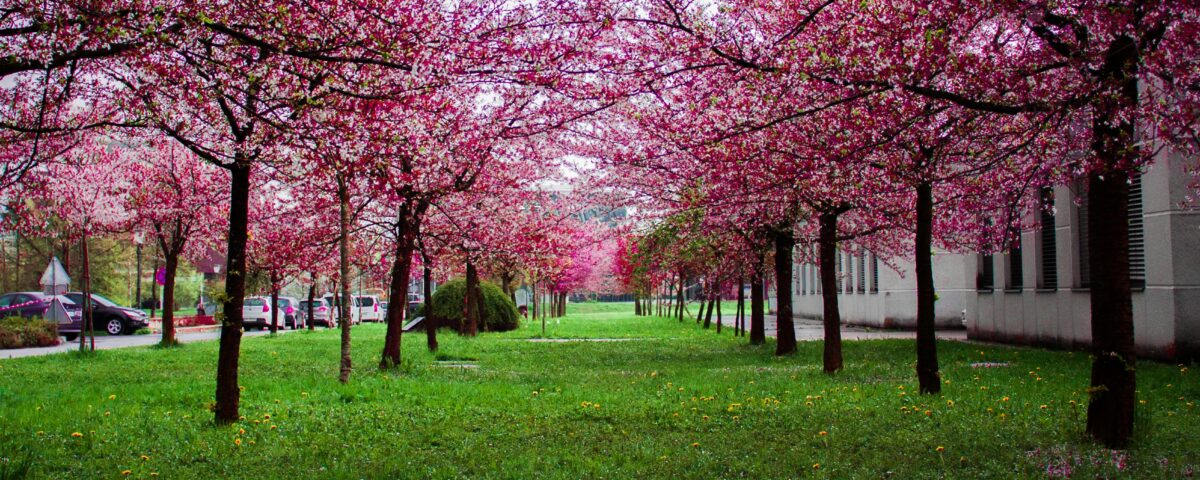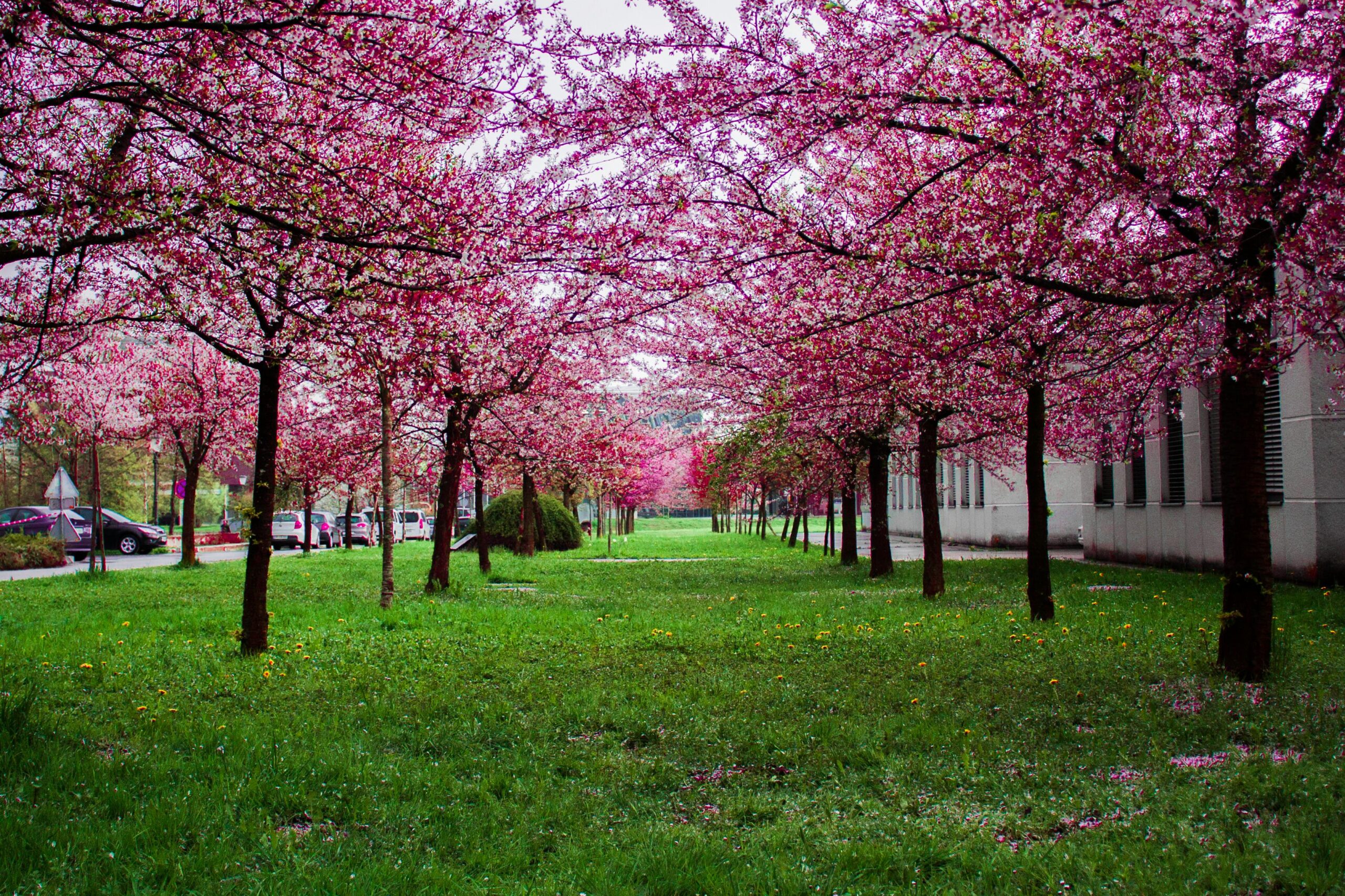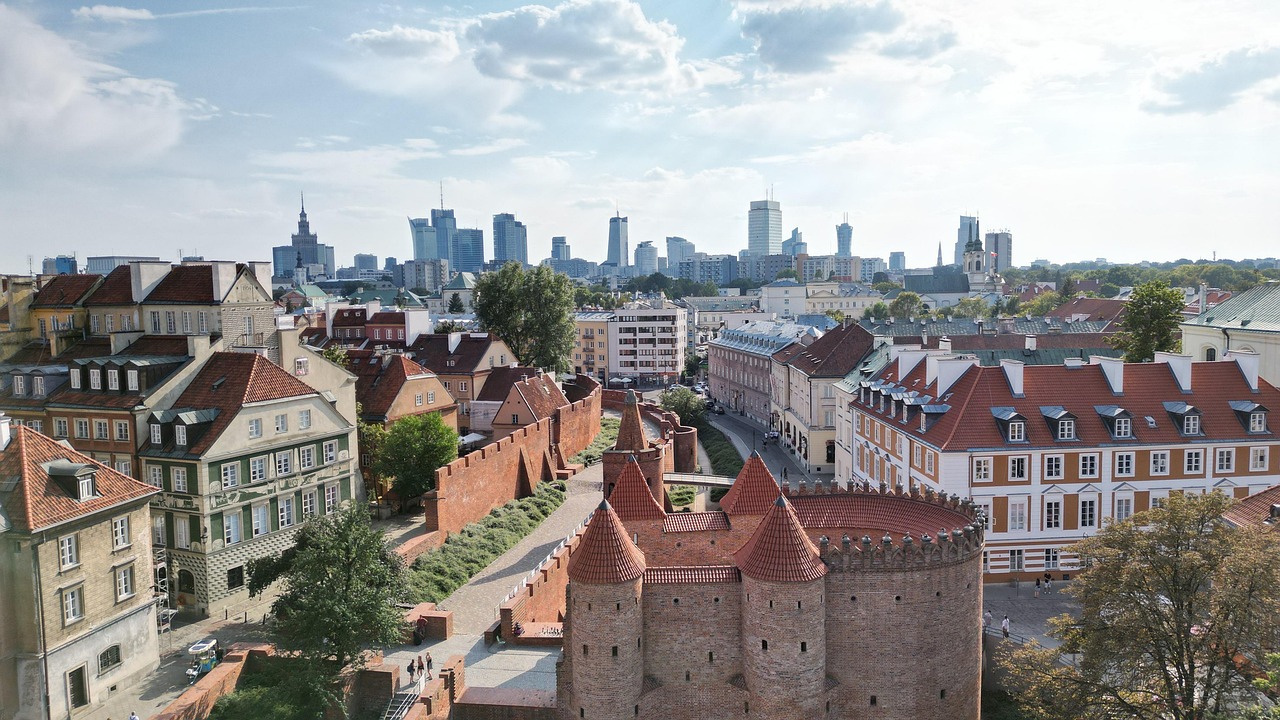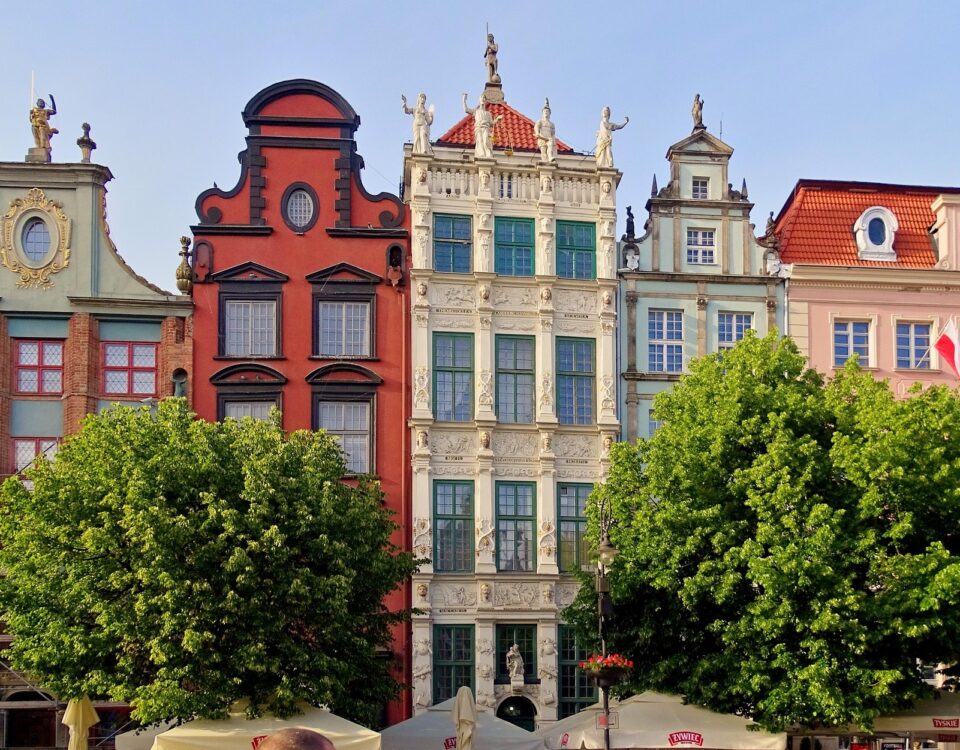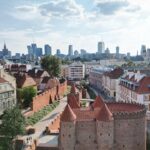
Culinary Museums and Food Heritage Centers to Visit in Eastern Europe
2025-10-27
Best Time to Visit Eastern Europe in Spring | Festivals, Weather & Travel Tips
2025-10-30Travel Guide
When planning a trip to Eastern Europe, timing can completely change your travel experience. Each season brings its own personality: spring bursts with colors and festivals, summer glows with energy, autumn wraps cities in golden light, and winter turns them into snow-covered fairy tales.
But what really is the best time to visit Eastern Europe? The answer depends on what you love most — vibrant festivals, peaceful landscapes, cultural events, or budget-friendly adventures.
This Eastern Europe travel guide breaks down every season, destination highlights, weather tips, and the most unforgettable festivals — so you can plan your trip perfectly.Stay with TripToEast
At Trip to East we help travelers, expats, and curious explorers navigate life, immigration, and adventure across Eastern Europe. In this ultimate guide, you’ll discover where to go, what to see, how to plan, and practical tips for visas, residency, and life on the ground.
👉https://triptoeast.com/countries-to-explore-in-eastern-europe/
Spring in Eastern Europe (March – May): Renewal, Color & Fewer Crowds
Spring is one of the most underrated seasons to visit Eastern Europe, yet it offers everything travelers dream about — mild weather, lower prices, and blooming cities that feel alive after the long winter.
Weather and Atmosphere
Temperatures range from 10°C to 20°C (50°F–68°F). Snow melts from mountain towns, and parks explode with cherry blossoms and tulips. Daylight grows longer, making it perfect for sightseeing and photography.
Best Destinations in Spring
-
Prague, Czech Republic: Wander Charles Bridge in the early morning before the summer crowds arrive.
-
Budapest, Hungary: The Danube River banks are green and lively; boat cruises are less crowded.
-
Kraków, Poland: Ideal for history lovers — fewer tourists and more authentic experiences.
-
Ljubljana, Slovenia: The pastel old town is magical in April.
Major Events
-
Budapest Spring Festival (Hungary): One of Europe’s largest cultural celebrations featuring classical concerts, art, and theatre.
-
Prague Easter Markets: Wooden stalls, hand-painted eggs, and local sweets bring Old Town Square to life.
-
May Day Celebrations: Folk dances and parades across Poland, Romania, and Bulgaria.
Travel Tips for Spring
-
Prices are 30–40% lower than in summer.
-
Ideal for couples and photographers.
Occasional showers — pack a light raincoat.
Start exploring now 👉https://triptoeast.com/eastern-europe-travel-guide/
Summer in Eastern Europe (June – August): Festivals, Sunshine & Buzzing Streets
If you want to feel the energy of Europe, summer is when Eastern Europe shines brightest. Warm days, long nights, and a calendar full of festivals make it the peak travel season.
Weather and Vibe
Expect temperatures between 22°C–32°C (72°F–90°F). The Adriatic coast gets hotter, while inland cities like Budapest and Bucharest are warm but breezy at night.
Top Summer Destinations
-
Dubrovnik, Croatia: Sunbathe by the Adriatic and walk ancient walls at sunset.
-
Budapest, Hungary: Enjoy open-air spas, rooftop bars, and the legendary Sziget Festival.
-
Tallinn, Estonia: Cool summer days, medieval lanes, and midnight sunshine.
-
Lake Bled, Slovenia: Picture-perfect lake surrounded by mountains — ideal for swimming or kayaking.
Major Summer Festivals
-
Sziget Festival (Hungary): One of Europe’s biggest music events with global artists.
-
Exit Festival (Serbia): Held inside a fortress in Novi Sad — electronic, rock, and world music.
-
Dubrovnik Summer Festival (Croatia): Outdoor theatre, dance, and music under the stars.
-
Gdańsk St. Dominic’s Fair (Poland): A historic market tradition since the 13th century.
Travel Tips for Summer
- Book 3–4 months in advance for cheaper flights and hotels.
- Coastal destinations (Croatia, Montenegro, Bulgaria) get crowded.
- Expect higher prices in July and August
- Ultimate Eastern Europe travel guide | 2025 Edition + Facts
Autumn in Eastern Europe (September – November): Golden Landscapes & Cultural Calm
When the crowds leave and nature starts painting with gold and red, autumn becomes arguably the best time to visit Eastern Europe for balance, beauty, and value.
Weather and Atmosphere
Temperatures cool down to 10°C–20°C (50°F–68°F). Crisp air and colorful forests make cities and countryside equally charming.
Top Autumn Destinations
-
Transylvania, Romania: The Carpathian Mountains glow with autumn colors — ideal for hiking and castle hunting.
-
Warsaw, Poland: Beautiful parks and cozy cafés; perfect for city strolls.
-
Bratislava, Slovakia: Fewer tourists and great wine festivals.
-
Lake Balaton, Hungary: The “Hungarian Sea” is quiet but still scenic.
Fall Festivals and Events
-
Wine Harvest Festivals: Across Hungary, Romania, and Bulgaria — taste regional wines and local food.
-
Warsaw Film Festival (Poland): An international event for cinema lovers.
-
Autumn Jazz Festivals: Prague, Bucharest, and Vilnius host live jazz nights through October.
Travel Tips for Autumn
- Accommodation prices drop up to 50% after September.
- Ideal for cultural trips, hiking, and photography.
- Nights can get chilly — pack layers.
Winter in Eastern Europe (December – February): Snow, Magic & Christmas Spirit
Winter transforms Eastern Europe into a land of fairy-tale charm. Yes, it’s cold — but it’s also magical, affordable, and incredibly festive.
Weather and Vibe
Temperatures range from –5°C to 5°C (23°F–41°F). Expect snow in Poland, Czech Republic, and Slovakia, while southern areas like Bulgaria are milder.
Best Winter Destinations
-
Prague, Czech Republic: Romantic lights, Christmas markets, and cozy pubs.
-
Vienna & Budapest: Gorgeous architecture glowing under festive lights.
-
Zakopane, Poland: A ski resort with wooden chalets and local mountain cuisine.
-
Bansko, Bulgaria: Affordable skiing with modern facilities.
Winter Events & Festivals
-
Christmas Markets: Prague, Vienna, and Kraków host Europe’s most enchanting ones.
-
New Year’s Eve Fireworks: Budapest and Belgrade are famous for lively celebrations.
-
Maslenitsa (Russia/Ukraine): Pancake week before Lent — colorful folk traditions.
Travel Tips for Winter
- December and January are budget-friendly months, except for holidays.
- Pack thermals, gloves, and waterproof boots.
- Winter is best for culture lovers, photographers, and couples.
Insider Tips for Planning Your Eastern Europe Trip
- Book trains in advance: Eastern Europe’s rail networks (like RegioJet and PKP Intercity) are cheap and scenic.
- Use local transport apps: Bolt and Citymapper work well in most cities.
- Currency: Not all countries use the Euro — check rates in advance (Czech koruna, Polish zloty, Hungarian forint).
- Language tip: English is widely understood in major cities; a few local phrases go a long way.
- Safety: Eastern Europe is generally safe, even for solo travelers.
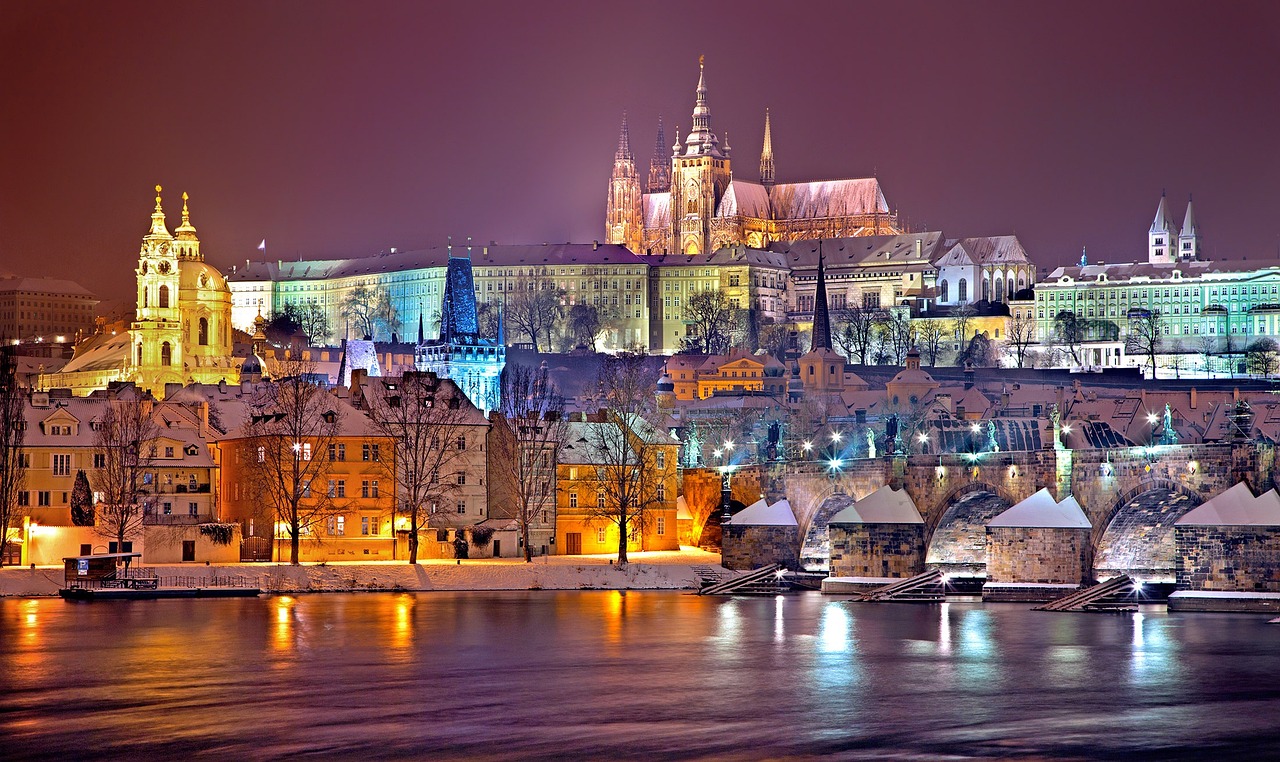
| Season | Average Hotel Price | Crowds | Best For |
|
Spring |
Moderate |
Low |
Culture, nature, city breaks |
|
Summer |
High |
Very High |
Festivals, beaches, nightlife |
| Autumn | Low | Moderate | Wine, photography, quiet travel |
| Winter | Low | Low | Christmas, skiing, cozy trips |
Budget Tip: To save money, travel during the shoulder months — late April–early June or mid-September–October. Flights are cheaper, hotels are available, and weather is still beautiful.
Insider Tips for Planning Your Eastern Europe Trip
-
Book trains in advance: Eastern Europe’s rail networks (like RegioJet and PKP Intercity) are cheap and scenic.
-
Use local transport apps: Bolt and Citymapper work well in most cities.
-
Currency: Not all countries use the Euro — check rates in advance (Czech koruna, Polish zloty, Hungarian forint).
-
Language tip: English is widely understood in major cities; a few local phrases go a long way.
-
Safety: Eastern Europe is generally safe, even for solo travelers.
Best Experiences by Season
|
Suggested Destinations |
Best Season |
Type of Experience |
|
Budapest, Prague, Kraków |
Spring / Summer |
Cultural Festivals |
|
Transylvania, Tatras Mountains |
Spring / Autumn |
Nature & Hiking |
| Croatia, Montenegro, Bulgaria |
Summer |
Beaches & Islands |
| Prague,
Vienna, Kraków |
Winter |
Christmas Markets |
| Hungary,
Romania, Slovenia |
Autumn |
Wine & Food Tours |
What to Pack for Each Season
-
Spring: Light jacket, umbrella, sneakers
-
Summer: Sunscreen, hat, refillable water bottle
-
Autumn: Warm sweater, waterproof shoes
-
Winter: Thermal clothes, gloves, power bank (cold drains batteries fast!)
-
https://en.wikipedia.org/wiki/Eastern_Europe
FAQ – Best Time to Visit Eastern Europe (SEO-Rich Snippet Style)
1. What is the overall best time to visit Eastern Europe?
The best time to visit Eastern Europe is during spring (April–May) and autumn (September–October). You’ll enjoy mild weather, fewer crowds, and lower prices compared to the busy summer months.
2. Is Eastern Europe cheap to visit?
Yes. Even during summer, Eastern Europe remains one of the most affordable regions in Europe. Countries like Bulgaria, Romania, and Poland offer great value for accommodation, food, and attractions.
3. Which month is best for festivals in Eastern Europe?
July and August are the top festival months, featuring events like Sziget (Hungary) and Exit (Serbia). However, December brings magical Christmas markets.
4. Is winter a good time to visit Eastern Europe?
Absolutely! While cold, winter offers fewer tourists, cozy vibes, and lower prices. Christmas markets and skiing resorts make it a great choice for couples and families.
5. Which countries are best for first-time visitors?
Start with Czech Republic (Prague), Hungary (Budapest), and Poland (Kraków) — they combine affordability, rich culture, and easy transportation.
Final Thoughts: Every Season Tells a Different Story
There isn’t just one best time to visit Eastern Europe — it’s about what you want from your journey.
-
Go in spring for colors and culture.
-
Choose summer for sunshine and nightlife.
-
Pick autumn for peace and golden scenery.
-
Travel in winter for cozy magic and festive charm.
Whether you’re exploring ancient castles in Transylvania, drifting down the Danube in Budapest, or sipping wine in Slovenia, every season in Eastern Europe has its own story — waiting for you to live it.


